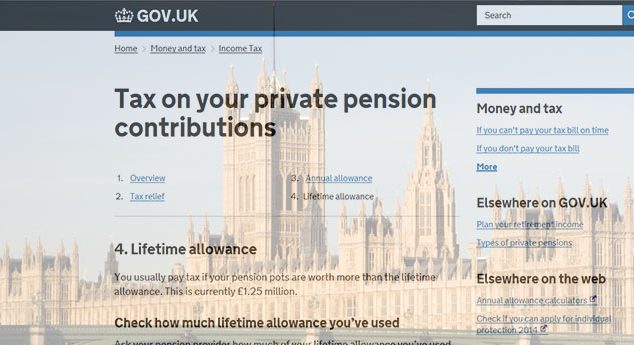
The lifetime allowance was introduced in 2006 as a way to test all pension benefits built up by one individual over their lifetime.
The tests with respect to the allowance take account of the timing of the benefits, type of benefit and the available allowance at the time. It was originally believed that this allowance would increase over time but it hit a peak of £1.8m in the tax years 2011/12 and 2013/14 before it started descending to where it is now and will soon drop to £1m – £500,000 less than the value at which it was introduced. The impact of these reductions will be hitting individuals who never thought they would be near the LTA and they will need to consider what they want to do with regards to ongoing pension provision and if they need to apply for protection from these reductions. The lifetime allowance was introduced in 2006 as a way to test all pension benefits built up by one individual over their lifetime.
| Tax Year | Lifetime Allowance |
|---|---|
| 2006/07 | £1.5m |
| 2007/08 | £1.65m |
| 2009/10 | £1.75m |
| 2010/11 | £1.8m |
| 2011/12 | £1.8m |
| 2012/13 | £1.8m |
| 2013/14 | £1.5m |
| 2014/15 | £1.25m |
| 2015/16 | £1.25m |
| 2016/17 | £1m |
The complexities of this will mean that many who didn’t believe they were in need of financial advice surrounding their pensions will now need to seek help to understand the implications of these changes.
All these changes meant that the Government has introduced many different types of protection from changes to the lifetime allowance. In 2006, because of the way benefits were going to be tested was changing, we had primary and enhanced protection, which was then followed by fixed protection and fixed protection 2014.
Primary protection was only available to those with pension savings at more than £1.5m at 5 April 2006 (A-Day). This was the total of crystallised and uncrystallised funds, and gave the client a multiple of the standard LTA.
So if you had pension savings of £3m then you would have a LTA enhancement factor of 1, meaning you had one extra LTA. In addition, you could protect the pension commencement lump sum, should it be more than £375,000 at A-Day, this was a monetary amount that you could take from any of your schemes until it was used up. It was increased over time in line with the rate of increase in the LTA, but remained at the maximum it could reach when the allowance peaked at £1.8m
Enhanced protection was available to anyone, regardless of the size of his or her pension benefits, at A-Day. It gave an unlimited LTA, meaning they would not be hit by any LTA charge, regardless of the value of their pension rights when crystallised.
However, no relevant benefit accrual can occur after A-Day, as this basically consists of accrual in a defined benefit scheme or further contributions in a money purchase scheme. There can be an increase in the fund or benefits within the scheme and tests are done on crystallisation or transfer from a defined benefit scheme to check that benefits have not increased above the acceptable level. If relevant benefit accrual does occur, enhanced protection will be lost, and if the value at retirement exceeds the LTA then tax charges will apply.
Individuals had to apply for primary and/or enhanced protection before 6 April 2009, although later applications had been accepted for special situations such as people returning to the UK after many years abroad or for other valid reasons which means they would not have been aware of the rules.
Fixed protection was introduced in 2012 protecting the LTA at £1.8m on 5 April 2012, and repeated in 2014 for the LTA of £1.5m on 5 April 2014. Each instance of this protection gave the individual the relevant set LTA and had to be applied for before the associated drop in the LTA. There were no application restrictions, but once the drop came into force they were not allowed any relevant benefit accrual. This is similar to enhanced protection, but not the same. With defined benefits for instance, the test is a rolling test rather than just a crystallisation or transfer, so one large discretionary increase could see the loss of protection, unlike enhanced protection that may have been able to absorb the single increase because of other years of little or no increases.
Should fixed protection be lost then the individual will revert to the standard LTA at that point in time, although any previous crystallisations will not be recalculated to take account of the reduction.
Currently, the only available protection is individual protection. This was introduced to give a protected LTA equal to the value of pension rights on 5 April 2014 – up to an overall maximum of £1.5m. The calculations of the value of benefits an individual held at 5 April 2014 give an accurate protection value. These calculations are similar to those used for primary protection in 2006 unless benefits have been taken in the meantime, in which case the amount crystallised is adjusted to take account of the change in the lifetime allowance from whatever it was at the point of crystallisation to £1.5m. This means you are not actually looking at the value of these benefits now, but the amount of the LTA previously used up in making the calculation fairer for all.
It is possible to continue to accrue benefits and make contributions with individual protection without losing the protection itself, but any funds over the individual LTA will be subject to tax charges on crystallisation. It is still possible to apply for individual protection 2014 up until 5 April 2017.
Individual protection can be held alongside fixed protection 2012, fixed protection 2014 or enhanced protection, but not primary protection.
The announcement in the autumn statement in 2014 that there would be an additional drop in the LTA from £1.25m to £1m started the speculation about what protections would be available this time around. Although HM Revenue & Customs issued some details early on about the likelihood of a repeat of fixed and individual protection in 2016, very little else was said. It was expected that the legislation for the change and the protections would be in the Finance Bill 2015. This usually gives plenty of time following the enactment of the Bill for the forms to be produced and available for applications (for fixed protection) to be made before the end of the tax year. As it was not in the Finance Bill 2015, it was expected in the Summer Finance Bill 2015, but appears to have been forgotten again.
Recently, HM Revenue & Customs announced that there will still be fixed and individual protection 2016, but the legislation will be in the Finance Bill 2016. This means there is no scope for applications before the end of this tax year, breaking with the normal rules for fixed protection that usually has to be in place before the drop in the LTA actually occurs. Individual protection can not actually be applied for before the end of the tax year because the value of the benefits will again need to be calculated on 5 April 2016, but it is looking like applications will not be available for some time after that.
With fixed protection we know that the same rules are likely to be in place regarding contributions and relevant benefit accrual, so those planning on applying for fixed protection 2016 will need to cease contributions before the end of the tax year in anticipation of the application process being launched. For those wanting to apply for individual protection, 2016 there is not so much of an issue, but any growth or contributions paid after 5 April 2016 is likely to push them over their personal allowance and therefore be subject to the LTA charge when benefits are taken.
Advice is key when looking at the options available to those that may be near the lifetime allowance, if isn’t as simple as looking at the benefits today and deciding if you should opt out. The calculations surrounding the actual level of benefits can be complicated and must include benefits already accessed to make sure nothing is missed
The drop in the LTA leads many people to cease contributing to their pensions because they fear the LTA charge, but in some circumstances it may be better to stay in the scheme and just take the tax hit at retirement. First, we have no idea what will really happen to the LTA in the future. We have been assured that it will start to go up again, but there is always scope for a future government to scrap the concept entirely.
There may also be people who will not receive any additional benefit from their employer in exchange for opting out of the pension scheme – this is actually quite common where flexible benefit packages are not in place. It seems daft to give up the accrual or contributions when you will in theory still receive 45 per cent of the benefit in the end, as 45 per cent of something is definitely better than 100 per cent of nothing.
The issues with the LTA are that all clients will be different. Different employments, different benefit packages and different timescales of retiring. So there is not one plan that will work for all and opting out en masse for those that may breach the LTA in the future will be unlikely to be suitable and could be incredibly risky.
The opinions expressed herein are those of Cantab Asset Management Ltd and should not be construed as pension or investment advice. Cantab Asset Management Ltd is authorised and regulated by the Financial Conduct Authority.
Key points
- The Lifetime Allowance was introduced in 2006 as a way to test all pension benefits built up by one individual over their lifetime
- Primary protection was only available to those with pension savings of more than £1.5m at 5 April 2006 (A-Day)
- The drop in the LTA leads many people to stop contributing to their pensions because they fear the LTA charge
Risk warnings
This document has been prepared based on our understanding of current UK law and HM Revenue and Customs practice, both of which may be the subject of change in the future. The opinions expressed herein are those of Cantab Asset Management Ltd and should not be construed as investment advice. Cantab Asset Management Ltd is authorised and regulated by the Financial Conduct Authority. As with all equity-based and bond-based investments, the value and the income therefrom can fall as well as rise and you may not get back all the money that you invested. The value of overseas securities will be influenced by the exchange rate used to convert these to sterling. Investments in stocks and shares should therefore be viewed as a medium to long-term investment. Past performance is not a guide to the future. It is important to note that in selecting ESG investments, a screening out process has taken place which eliminates many investments potentially providing good financial returns. By reducing the universe of possible investments, the investment performance of ESG portfolios might be less than that potentially produced by selecting from the larger unscreened universe.


